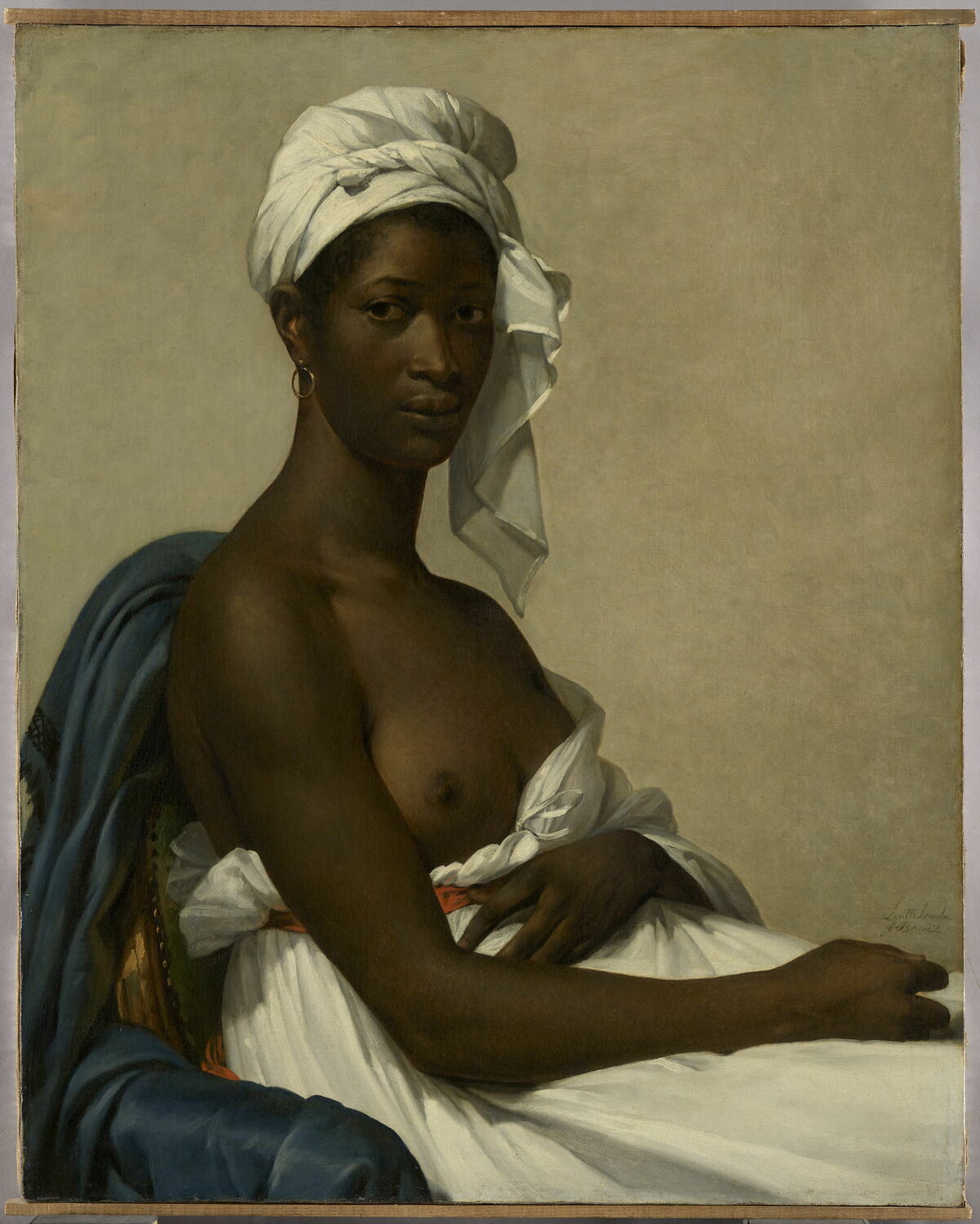Marie-Guillemine Benoist’s Portrait of Madeleine is one of the most interesting paintings of the Louvre gallery dedicated to paintings by Jacques-Louis David and his students. The painting shows a young black woman seated in an armchair. In choosing to paint a woman of color, Benoist selected an unusual subject for a portrait and engaged a politically contentious issue.
The painting was exhibited at the Paris Salon, the most important exhibition of the epoch. Portrait of Madeleine is consistent with the conventions of portraiture and the Neoclassical aesthetic prevailing in France in 1800. The bared breast underlines the contrast of skin and fabric: in portraits, a convincing rendering of flesh tones was crucial, and in the European tradition, as far back as the 16th century, the skin of “Ethiopians” (as Africans were commonly called) was considered especially challenging to paint. Benoist’s work is a striking demonstration of her capabilities as a portraitist.
We don't know the sitter’s story, but thanks to recent research, we know what her name was. Madeleine is thought to have been brought to France from the island of Guadeloupe by the artist’s brother-in-law, a ship’s purser and civil servant. She was likely born a slave in the colony and freed by the Revolutionary decree of 1794 abolishing slavery, but her actual status may have been ambiguous. Whether she was brought to France as a slave or a servant, she—unlike fashionable women who commissioned their portraits—would have had little influence on how Benoist represented her.
Today's story is a part of our celebrations of Women's History Month. :)
P.S. Even though Black people have lived in great numbers across Europe dating back to at least the 16th century, their portraits are rare in European art history. Read more about the Black models in European art.
P.P.S. Have you seen our collections of products related to Women Artists? Check it out here!


.jpg) Marie Benoist
Marie Benoist